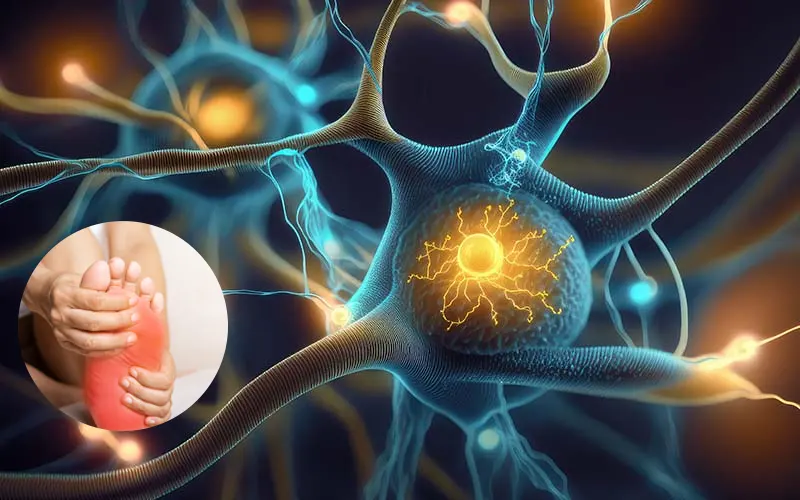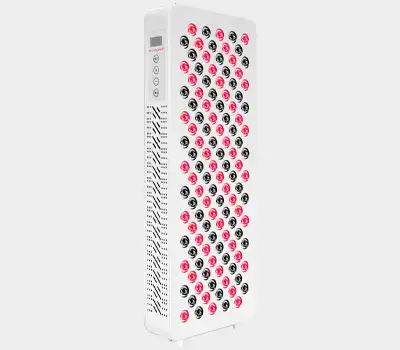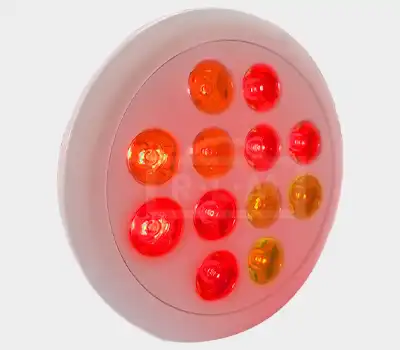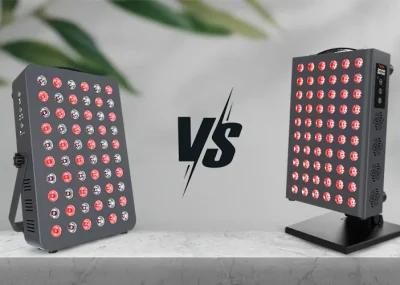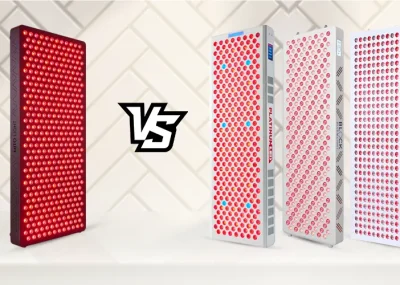When it comes to nerve disorder or pain, Neuropathy is a condition that is rarely absent from the list of triggers. Neuropathy, a condition that affects the peripheral nervous system, can result in pain, numbness, and weakness, particularly in those suffering from diabetes, chemotherapy side effects, or other chronic illnesses. Neuropathy affects a significantly huge percentage of individuals with pain ranging from mild to severe, as one gets older there’s a higher chance of getting the condition.
For individuals suffering adverse and severe neuropathy, a productive daily life might be an uphill task. You can manage the condition with medically approved traditional treatment options like topical creams or drugs that might not be effective in easing the discomfort.
However, this does not mean you throw in the towel and power through the pain. Quite the contrary, with red light therapy, you get an alternative treatment option that is risk-free, non-invasive, and can be done in the comfort of your home, providing positive results.
Read on to know how red light therapy might be the solution to Neuropathy pain and discomfort.
What is Neuropathy?
Neuropathy can be defined as nerve damage as it affects the nerves in different areas of the body, destroying them and making it impossible for them to send signals to the brain. When this happens, it results in pain often, accompanied by some common neuropathy symptoms. They can be burning, stabbing, or a tingling sensation, a way of the brain interpreting and transmitting unclear messages.
Red Light Therapy for Neuropathy – Physical Therapist Morgan Hopkins
Types of Neuropathy
- Peripheral Neuropathy
- Autonomic Neuropathy
- Focal Neuropathy
- Hereditary Neuropathy
- Diabetes: The most common cause, leading to damage to blood vessels supplying nerves.
- Alcohol Abuse: Excessive alcohol consumption can damage nerves directly.
- Vitamin Deficiencies: Deficiencies in B vitamins (especially B12) can impair nerve function.
- Autoimmune Disorders: Conditions like multiple sclerosis and lupus can attack nerves.
- Infections: Viral or bacterial infections can damage nerves.
- Trauma: Physical injuries can lead to nerve damage.
- Compression: Pinched nerves, such as carpal tunnel syndrome, can cause neuropathy.
- Certain Medications: Some medications can have side effects that damage nerves.
- Throbbing
- Numbness
- Sensitivity to touch
- Lack of balance and coordination
- Muscle weakness
- Paralysis or
- Double vision
Peripheral neuropathy is the most common form of nerve damage, affecting nerves outside the brain and spinal cord.
Symptoms: It can cause numbness, tingling, pain, muscle weakness, and occasionally, problems with coordination.
Causes: This type is often linked to conditions like diabetes, vitamin deficiencies, autoimmune disorders such as Guillain-Barré syndrome, alcohol abuse, and the side effects of certain medications.
This form of neuropathy impacts the nerves responsible for controlling involuntary functions, such as blood pressure regulation, digestion, and sweating.
Symptoms: Individuals may experience dizziness, fainting, digestive problems like constipation or diarrhea, sexual dysfunction, and abnormal sweating patterns—either excessive or reduced.
Focal neuropathy affects one specific nerve or a small cluster of nerves.
Symptoms: This can result in sudden weakness or numbness in a specific region, such as the face, arm, or leg.
Causes: It’s often due to nerve compression (like carpal tunnel syndrome), inflammation, or injury.
Hereditary neuropathy is caused by genetic mutations that can be passed down through families.
Symptoms: These can vary depending on the mutation but frequently include progressive muscle weakness and numbness over time.
Root Causes of Neuropathy
Due to its varying nature for different individuals, other than the three symptoms highlighted above, there are other signs that might be indicators of neuropathy. They are:
How Can Red Light Reverse Nerve Damage?
RLT uses specific wavelengths of red and near-infrared light (typically ranging from 630nm to 850nm) to penetrate the skin and promote healing at the cellular level. This light stimulates the mitochondria in cells, enhancing ATP production, which leads to improved cellular energy and function. In the case of neuropathy, red light can help regenerate nerve cells, reduce inflammation, and relieve pain.
You can use medication to get relief from neuropathy discomfort, but, red light therapy as an alternative is a better option; it’s safe and can be used several times until you get the desired results without becoming addictive. With the use of a red light device, you will be able to release rays that will penetrate your body leading to an improved cell function providing you relief and treatment.
Below, we shall look at the mechanisms and cation of red light therapy for neuropathy treatment.
Improves Blood Circulation
Neuropathy is triggered by a lack of adequate blood supply around the nerves that causes them to become inactive. Red light therapy increases blood flow by widening and relaxing blood arteries.
Light therapy works at a cellular level since the rays can penetrate layers of the skin, when this happens, the cells produce nitric oxide. It is an essential molecule that ensures your blood vessels and arteries are healthy and a vasodilator that makes them wider. Bryan Wright, a seasoned physical therapist, highlights the significant impact of red light therapy on nerve health. “Red light therapy activates the release of nitric oxide to promote nerve regeneration and modulates the immune response to reduce neuroinflammation,” Wright explains.
When dilated, the vessels can accommodate and allow more blood flow that carries nutrients and oxygen. Through the improved flow, the potent blood will get to the damaged nerves and tissues providing you relief and healing.
Reduces Inflammation
Neuropathy brings about inflammation, pain, and discomfort, hence the major need for an effective solution. One of the pros of red light therapy is that it can help treat several health conditions, so while using it to increase blood flow, and enhance cell function; you can also expect it to reduce inflammation.
Inflammations come about as a result of the overproduction of inflammatory chemicals (cytokines and chemokines) that your body produces to tackle infections and damaged tissues. Light therapy helps regulate your immune response helping your body tackle inflammation that, if left unaddressed can further aggravate your neuropathy.
Reduction of Oxidative Stress
As red light therapy is working on your cell, it helps with their regeneration and repair process, ensures an adequate distribution and supply of vital nutrients and antioxidants, counteracts oxidative stress in the nerves.
Nerve Regeneration
Free radicals that can cause more damage to nerves are combated by red light therapy as it reduces oxidative stress within cells while it promotes nerve regeneration. The damaged nerves are replaced by the new nerves that grow through the regeneration process.
Enhances Cellular-Level and Mitochondrial Function
When nerves are damaged, the energy levels within them become insufficient, but with use of red light therapy, you can trigger metabolic actions in the mitochondria of the cells resulting in an increased production of energy and adenosine triphosphate (ATP).
The above actions ensure an adequate supply of energy to the cells further impacting their effectiveness in performing their functions properly. Light therapy triggers an increased production and formation of mitochondria contributing to an improved repair and regeneration of cells.
Research Supporting Red Light Therapy (RLT) for Neuropathy
Red light therapy (RLT) has shown promising results in managing neuropathic symptoms, based on multiple studies:
Diabetic Neuropathy:
Studies indicate that RLT can help reduce pain and enhance sensation for individuals with diabetic neuropathy. In a 12-week study involving 60 participants, pain levels were significantly reduced following consistent RLT sessions.
Chemotherapy-Induced Neuropathy:
Chemotherapy often leads to nerve damage, causing severe pain. Research suggests that RLT may aid in nerve regeneration and reduce the associated discomfort.
General Neuropathic Pain:
A comprehensive review of various studies supports RLT’s effectiveness in alleviating general neuropathic pain, leading to improved quality of life for patients.
Each of these findings emphasizes the potential of RLT as a supportive therapy for managing different forms of neuropathy.
Practical Guidelines for Using Red Light Therapy
To achieve optimal results, it’s important to follow the correct protocols when using RLT for neuropathy:
Wavelength
Use a red light therapy device that operates between 630nm and 850nm. For neuropathy, near-infrared light (850nm) is particularly effective, as it penetrates deeper into tissues.
Duration and Frequency
Sessions should last between 10 to 20 minutes, 3-5 times a week, depending on the severity of symptoms. It’s recommended to continue treatment for at least 8 to 12 weeks to see noticeable improvements. Wright further explains, “After consistent use for 10-15 minutes a few times a week, I have witnessed improvements in nerve conduction, balance, sensation, and quality of life for many patients.”
Application Areas
Focus on the areas most affected by neuropathy, such as the feet, hands, or legs. Make sure the device is positioned close to the skin (1 to 2 inches away) for maximum absorption.
Frequently Asked Questions
Q: Is red light therapy an effective treatment for neuropathy?
A: Yes, it is. Red light therapy helps promote the re-growth of new nerves by triggering optimum cell function. With the correct cell function, damaged nerves are replaced with new and healthier ones that provide healing from neuropathy.
Q: What precautions should I observe during red light therapy treatment sessions?
A: Red light therapy should ideally be used after you have done a consultation with a certified professional to get a better understanding of the dos and don’ts. Using protective eye gear is recommended, as well as sticking to the stipulated wavelength strength and duration per session.
Q: How does red light therapy help tackle neuropathy?
A: When red light rays penetrate the body, they reach the inner layers of your skin targeting the root cause of neuropathy. The light energy accelerates the regeneration and repair process of cells ensuring they perform their functions well that provides healing and relief from neuropathy.
Final Thoughts
Red light therapy is a promising treatment option for neuropathy, backed by scientific research and real-world applications. By following the recommended guidelines for wavelength, duration, and frequency, individuals with neuropathy can experience significant improvements in pain relief, nerve function, and overall quality of life.
While you can always go the traditional treatment route you need to be aware of some of the side effects that come along with such options like addiction and the fact that they might not only provide you with a temporary solution. Red light therapy helps tackle the root cause of neuropathy and not only the symptoms.

